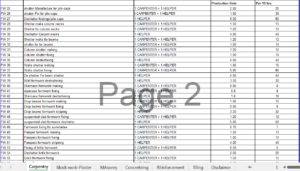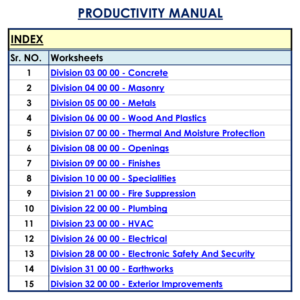EOT in Project Management stands for Extension of Time. Extension of time is a type of claims that appears in the projects, especially construction projects, due to changes in scope or delay in delivering the project deliverables due to many reasons.
Table of Contents
What is the cause of EOT?
The cause of EOT, or Extension of Time, in project management can vary depending on the specific circumstances of a project. EOT is typically sought when unforeseen events or issues arise that impede the project’s progress and make it impossible to meet the originally agreed-upon deadline. Here are some common causes of EOT:
- Unforeseen Delays: Unexpected delays can occur due to factors such as adverse weather conditions, natural disasters, or unforeseen technical challenges. These delays can significantly impact the project timeline.
- Changes in Project Scope: If there are significant changes or additions to the project scope that were not initially accounted for, it may require more time to complete the work properly.
- Resource Shortages: Shortages of essential resources, including skilled labor, materials, or equipment, can lead to delays in project execution.
- Design Changes: Changes in project design or specifications can necessitate additional time for planning, approvals, and execution.
- Contractual Obligations: In some cases, EOT may be granted due to contractual obligations. Contracts often include provisions for EOT, specifying the conditions under which it can be requested and granted.
- Unforeseen Circumstances: Events beyond the control of the project team, such as political unrest, economic crises, or global pandemics, can disrupt project schedules and require EOT.
- Legal or Regulatory Requirements: Changes in legal or regulatory requirements that affect the project may necessitate additional time for compliance.
It’s essential for project managers to thoroughly assess the cause of the delay, document it, and communicate it to all relevant parties when requesting an Extension of Time. Clear identification of the cause is crucial for justifying and obtaining approval for EOT in project management.
What is an extension of time approval?
An “extension of time approval” in the context of project management refers to the formal authorization or consent granted by relevant project stakeholders, such as clients, contractors, or project owners, to extend the originally agreed-upon completion deadline of a project. This approval allows the project team additional time to complete the project due to unforeseen delays or circumstances.
Here’s a breakdown of what an extension of time approval typically involves:
- Request Submission: When a project encounters unexpected delays or challenges that make it impossible to meet the original deadline, the project manager or responsible party submits a formal request for an extension of time.
- Documentation: The request includes comprehensive documentation that outlines the reasons for the delay, the impact on the project’s schedule, and the amount of additional time required. Supporting evidence, such as records of the delay’s cause, may also be included.
- Review Process: The request undergoes a review process, often involving project stakeholders and possibly legal or contractual experts. The purpose of this review is to assess the validity of the request and ensure it aligns with the contractual agreements in place.
- Approval Decision: Based on the review, the relevant authorities make a decision regarding whether to grant the extension of time. If the request is justified and aligns with the project’s contract terms, approval is granted.
- Communication: Once the extension of time is approved, clear communication is essential. All project stakeholders are informed of the decision, and the new project timeline is established. This ensures that everyone involved understands the revised schedule.
- Schedule Adjustment: With the extension of time approval in place, the project manager updates the project schedule to reflect the new deadline. This adjusted schedule becomes the reference point for all project activities moving forward.
Extension of time approvals are a critical component of effective project management, as they provide flexibility and allow project teams to adapt to unforeseen challenges without compromising the overall success of the project. It is important to follow established procedures and maintain clear communication throughout the approval process to ensure that all parties are aligned and informed about the changes to the project timeline.
What are the different types of extension of time?
In project management, extensions of time (EOT) can take various forms, depending on the circumstances and the terms outlined in the project contract. Here are different types of extensions of time:
- Excusable Delays: These are delays caused by factors beyond the control of the project team or contractors. Excusable delays may include extreme weather conditions, natural disasters, or unforeseen events like strikes. EOT for excusable delays is typically granted to account for the time lost due to these uncontrollable factors.
- Compensable Delays: Compensable delays occur when the project is delayed due to actions or decisions made by the project owner or client. For example, if the client requests changes to the project scope or design, causing delays, the project team may be entitled to an EOT to account for the extra time required to implement these changes.
- Concurrent Delays: These are situations where multiple delays occur simultaneously, making it challenging to determine which delay caused the project setback. In cases of concurrent delays, an EOT may be granted to cover the delay caused by factors within the control of the contractor, while the delay attributed to the client or external factors is not counted.
- Critical Path Delays: In project scheduling, the critical path represents the sequence of activities that determine the project’s overall duration. If a delay occurs on the critical path, it can have a significant impact on the project’s completion date. EOT for critical path delays is granted to adjust the project timeline accordingly.
- Acceleration: In some cases, project owners may request acceleration of the project, which means completing the project faster than initially planned. Acceleration may result in additional costs and resources, and contractors may request an EOT to accommodate the increased workload.
- Owner-Initiated Delays: Delays caused by actions or decisions made by the project owner or client, such as late approvals, design changes, or funding issues, can lead to EOT requests by contractors.
- Contractual EOT: Project contracts often specify conditions under which EOT can be granted. These conditions may include specific events or circumstances that automatically entitle the project team to an extension of time. Contractual EOT is typically based on the terms agreed upon in the contract.
- Time Impact Analysis (TIA): In complex construction projects, a time impact analysis may be performed to assess the impact of various delays on the project timeline. This analysis can lead to the identification of specific delays that merit an EOT.
- Global EOT: A global EOT is granted when multiple delays and disruptions affect the project, making it challenging to attribute each delay to a specific cause. In such cases, a single extension of time is granted to cover the overall delay.
Understanding the different types of extensions of time is essential in project management to ensure that the appropriate EOT is requested and granted when necessary. Clear communication and adherence to contractual terms are crucial in the EOT approval process to avoid disputes and maintain project transparency.
How to calculate the extension of time
Why EOT Matters
EOT plays a key role in project management because it acknowledges the reality that not all projects can be completed within the initially set timeframe. It offers flexibility and mitigates the potential consequences of unforeseen delays.
Legal and Contractual Implications
In many cases, EOT is a contractual matter. Contracts often include provisions for EOT, specifying under what circumstances it can be granted and the procedures for requesting it. This ensures that all parties involved are aware of their rights and responsibilities when it comes to project timelines.
Avoiding Disputes
Clearly defined EOT provisions can prevent disputes and legal issues between project stakeholders. When everyone understands the conditions under which EOT can be sought and granted, it reduces the likelihood of disagreements.
How to Apply for EOT
To request an Extension of Time, project managers typically follow these steps:
- Identify the Cause: Determine the root cause of the delay. It could be due to factors like weather conditions, unexpected resource shortages, or changes in project scope.
- Notify Relevant Parties: Inform all relevant parties about the delay, including clients, contractors, and team members. Timely communication is key.
- Submit a Formal Request: Prepare a formal request for EOT, detailing the reasons, impact on the project, and the amount of additional time required.
- Review and Approval: The request is reviewed by the relevant authorities, and if justified, the Extension of Time is granted.
- Adjust the Schedule: Once EOT is approved, update the project schedule to reflect the new timeline.
FAQs about EOT in Project Management
1. Is EOT the same as project timeline extension? No, EOT specifically refers to the extension of the project’s agreed-upon completion date due to unforeseen circumstances. A project timeline extension may be planned and agreed upon in advance.
2. Can EOT impact project costs? Yes, EOT can lead to increased project costs, as it may require additional resources or overtime payments to meet the extended deadline.
3. What documents are needed for an EOT request? Typically, you will need to provide a formal request letter, supporting evidence of the delay’s cause, and any relevant contract documents.
4. Are there limits to how much EOT can be granted? The amount of EOT granted depends on the project’s specific circumstances and contractual agreements. There is no fixed limit.
5. Can EOT be denied? Yes, EOT requests can be denied if they are not adequately justified or do not meet the criteria outlined in the contract.
6. How can project managers avoid the need for EOT? Effective project planning, risk management, and proactive problem-solving can help minimize the need for EOT.
Conclusion
In the world of project management, EOT, or Extension of Time, is a crucial concept that ensures projects stay on track even when unforeseen challenges arise. Understanding how to apply for EOT, its legal implications, and its significance in avoiding disputes is essential for successful project management. By following the proper procedures and maintaining clear communication, project managers can navigate EOT issues effectively, keeping projects on the path to success.


























